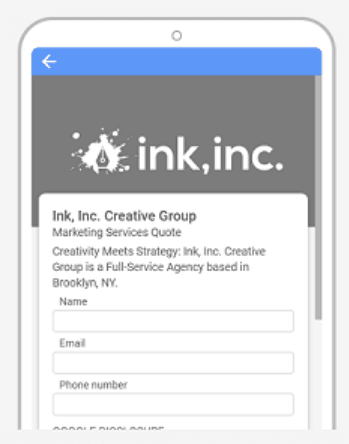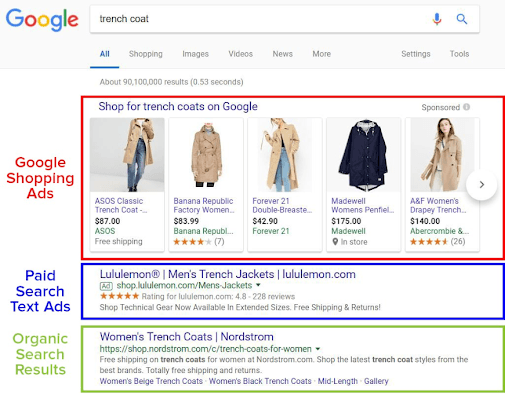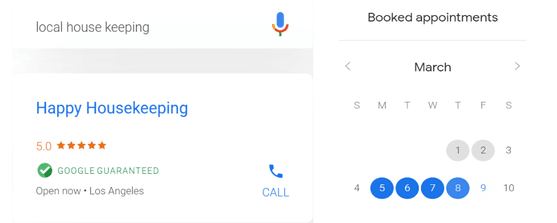How to Use Paid Search to Capture Customers
Paid search ads are still the best way to capture people who already have an interest in the product or service that your business provides. There are many benefits to using search advertising, including getting quick results and traffic to your website, building brand awareness, and capturing people at the bottom of the sales funnel to become new customers.
However, search advertising is complicated, even with the growth of machine learning and algorithms to help with the bidding and setup process, and it takes an expert to take advantage of all the opportunities on the search engines.
Google Search Ads vs. Microsoft Search Ads
There are two main platforms in paid search advertising, Google Ads & Microsoft Ads. Even though Google has the largest market share and is the first place most companies purchase ad space, Microsoft now has 33% of the market share in US search, with their network of Bing, Yahoo, and AOL search engines. Microsoft ads are also usually less competitive than Google Ads and have lower costs per click, which allows a smaller budget to go farther.
The biggest differentiator in the two platforms is in their audience demographics. While Google captures a wide range of demographics in its large audience of users, Microsoft ads can be a huge opportunity for those targeting older, business-focused customers.
Microsoft users are, on average, a bit older than Google users (average age of 45 vs. 38 on Google). They are more educated, with 50% of them having a college degree, and more affluent, with 33% of their users with a household income over $100k. Microsoft users are likely to be using computers at their businesses—44% of all business and finance-related searches take place on Bing.
Conversions and Tracking
Both ad platforms are also focused on getting businesses better results through changes in conversions and tracking. On Google, you can now assign conversion goals at the campaign level, which means that you can have one campaign focused on memberships and another campaign focused on online purchases. Store Visits can also now be attributed to ad views by companies with brick and mortar stores. And ad extensions like lead forms can also get your company conversions in the Google Search results.
In both Google and Microsoft, there has been a rise in using Offline CRM data to tell the algorithms how qualified each lead is to get better quality leads over time. By using the Google Click ID to identify a lead that came from an ad, CRM data can tell Google if that lead was Qualified or Unqualified and if that lead actually became a student or Closed Won Lead.
Instead of all leads being even in the algorithm, some leads are now seen as more valuable than others, which helps teach the algorithm to better target and bid over time
B2B & B2G Businesses
Both Google and Microsoft are focused on growing their targeting options for B2B companies. Microsoft now owns LinkedIn and allows advertisers to use job function, company name, and company industry targeting in paid search ads. Google has new business demographics search audiences, still in beta testing, which will allow users to target based on industry and company size.
Both companies allow advertisers to further target their keywords through business-focused In-Market audiences, Business Professionals Affinity audiences, and people similar to their current customers or website visitors through Similar to Audiences.
Lead Gen (Education, Association, Software)
For businesses that are asking for a lead form for a longer sales funnel, like education or non-profit organizations, there are also new targeting options on Google & Microsoft to increase the number and quality of leads from ads.
Both Google and Microsoft have been building new audiences and demographics for better targeting, like being able to target Current College Students on Google or people in-market for Post-Secondary Arts Education on both platforms.
Google has a new lead form ad extension, which is still in beta testing, where potential customers can fill out a lead form without having to click to your website, right in the search results, similar to Facebook and LinkedIn lead form ads.
E-Commerce
For businesses that are selling products on their websites, paid search ads compliment shopping ads. Shopping ads show above the search results and should be the foundation of any e-commerce paid advertising strategy. However, many people do scroll down to the search results, so it is important to have a presence there as well.
Dynamic Search Ads usually perform well with detailed product pages on an e-commerce website, because Google (or Microsoft) is able to scan the pages for lots of potential keywords and combinations that people may search for.
How Paid Search & Shopping Ads Work Together
Local Businesses
And, if you have a local storefront and are trying to build awareness and foot traffic in your community, Google has lots of opportunities to do just that. Studies have found that 80% of local searches by mobile phones have led to a conversion! By geotargeting your campaigns around your store address, you can show ads to potential customers as they spend time near your location, increasing bids the closer they are.
Ad extensions, like call extensions or location extension, which allows your ads to show in Google Maps, allow customers to easily call you or get directions in one click. If you provide a service that may require an appointment, you can use Google Local Services Ads, where people can click to call you or send a message or even directly book an appointment with you through Google. You can also track Store Visits to your location after people see or click on your ad.
Example of Local Services Ads on Google
Both Google & Microsoft’s Paid Search platforms are constantly expanding their targeting opportunities to match businesses of all types, sizes, ages, and industries. A good foundation in Paid Search is essential to set your business up for success in online advertising.
The experts at Perfect Search Media can help your business grow in Paid Search Advertising. Contact us!

Emily Lutz is from Kalispell, Montana and has been camping more times than she can count. She geeks out over musicals and the TV show Firefly (yes, she’s on some chat sites). Before joining Perfect Search, Emily was a zookeeper for ten years.



